Video formatting: pan and scan & open matte vs. original ratio
Super35 [cont.]
«Drive»
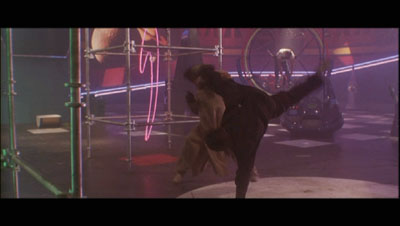 | 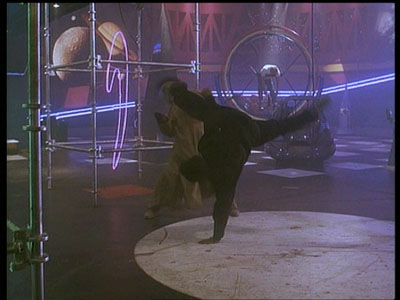
|
| «Drive» will not present extreme cropping, since it's not a film based on digital effects. On the other hand, the extraction process seems to be sort of automatic, since we always get more image above and below but there's also some cropping on the left on all shots I could compare. |
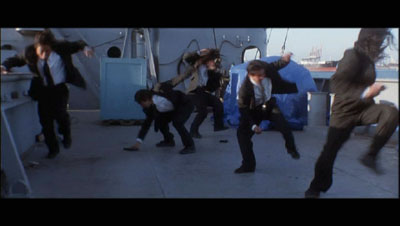 | 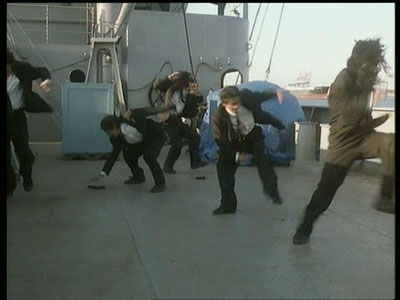
|
| Therefore action on the extreme left will be cropped out. |
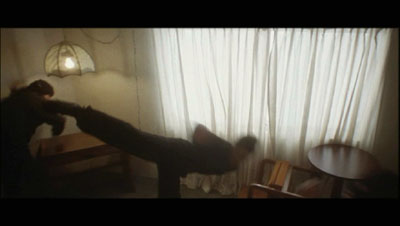 | 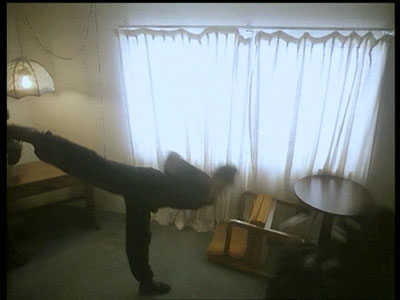
|
| A powerful kick can throw someone off the screen. At least the floor and the curtains are very pretty and we do get more of that. |
«Sydney/Hard Eight»
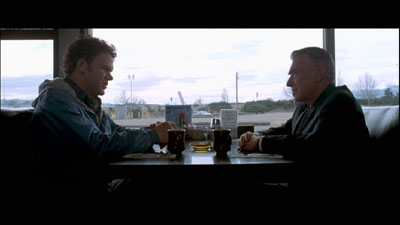 | 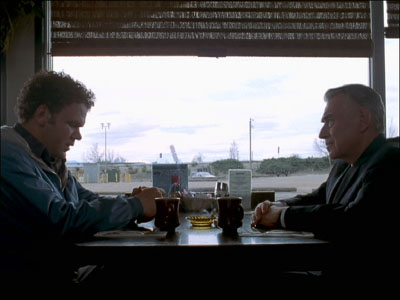
|
| «Sydney» is a good example of a Super35 non-digital FX film. We gain image above and below and we lose a bit on both sides. (This should mean that the negative area used was around 1.66:1). |
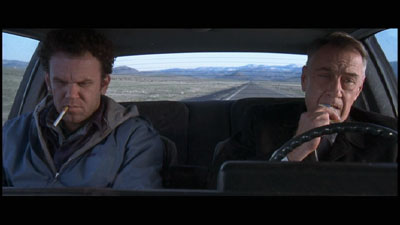 | 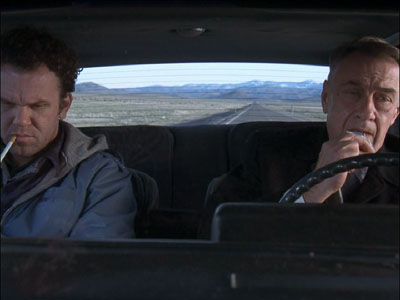
|
| Apart from all compositions becoming unbalanced (more pants, floor, ceiling and so on), a formatting process that appears to be semi-automatic will provide some ugly cropping. On a TV, with added overscan, the actor's eyes are probably cropped. |
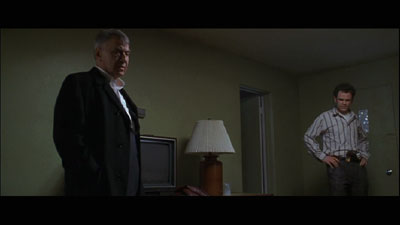 | 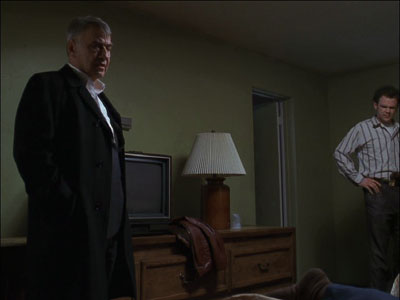
|
| Here overscanning cuts John C. Reilly in half. |
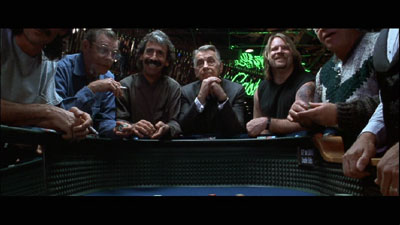
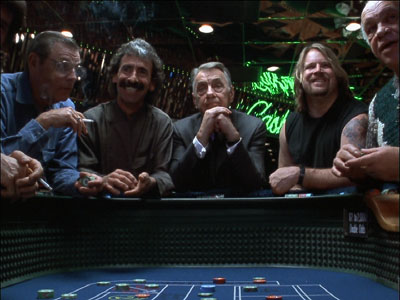 | 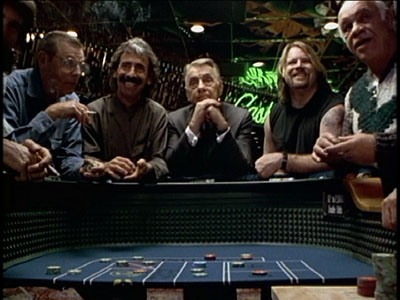
|
| This is an example on how the director not caring for "safe action areas" will force the formatting to 4:3 to crop a bit more of the available image. People that prefer "more image" should demand the end of this adjustments. We want to see it's a fake table! |
«Ronin»
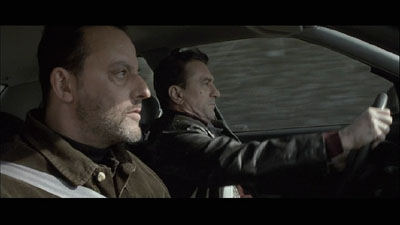 | 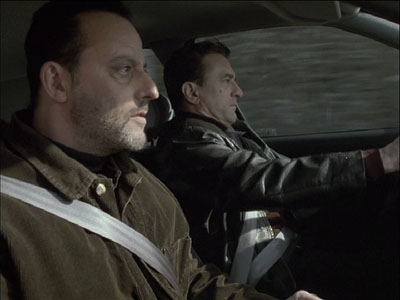
|
| «Ronin» was composed on the top of the negative, a method preferred to avoid the intrusion of microphones on 4:3 transfers. Hence the side cropping is compensated with more pants and asphalt. Here we have a very ugly image, with De Niro driving aggressively, though we don't get to seem him attacking the wheel. |
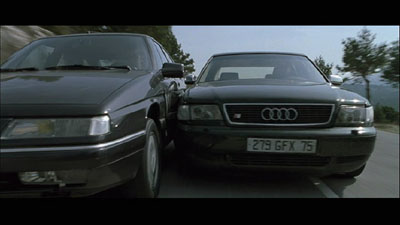 | 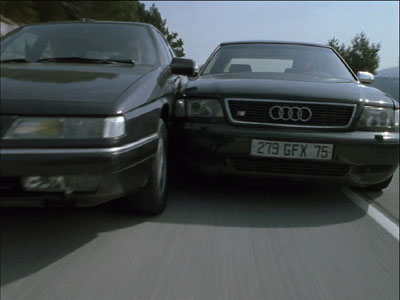
|
| The image is more tightened, in spite of the extra road, with some cropping of the background. |
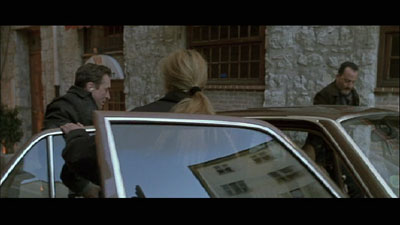 | 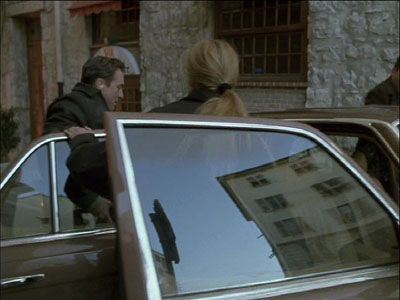
|
| A bit more of the door can't make up for the removal of Jean Reno. |
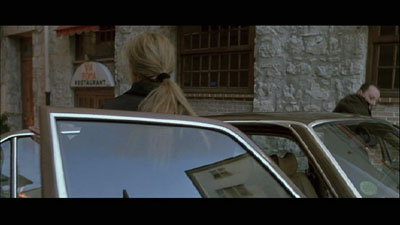 | 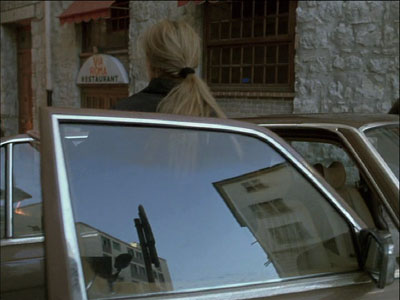
|
| Reno is still cropped out and... an hairy microphone is peeping on the reflex. |
«The Usual Suspects»
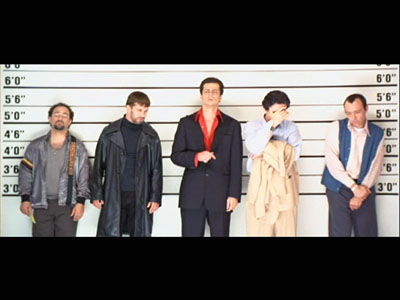 | 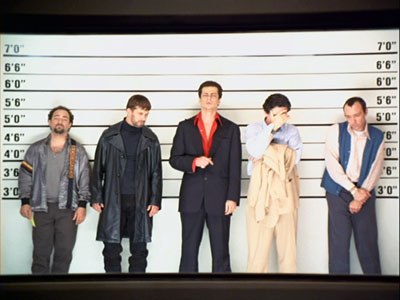
|
| «The Usual Suspects» seems to have use the whole height of the negative (1.37:1), as you can see in these two first comparisons. |
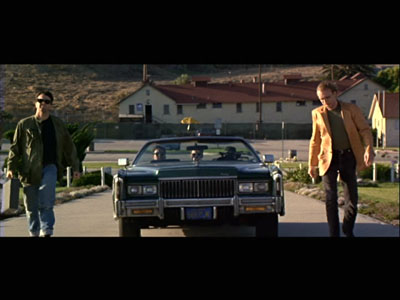 | 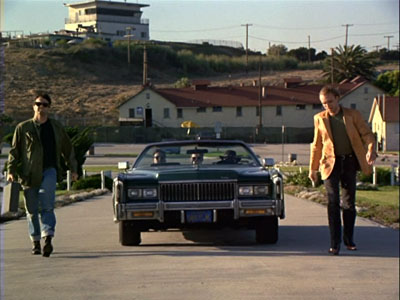
|
| But this film can still be used to show the several formatting options available to the modern telecine "artist". Scroll down... |
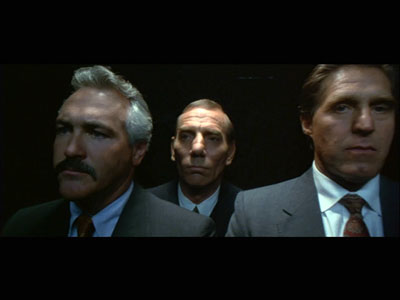 | 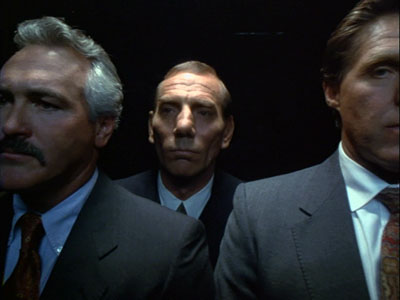
|
| This is a typical "semi"-light cropping of the sides, with a bit of image added above and below. Very frequent on Super35 films made 4:3. |
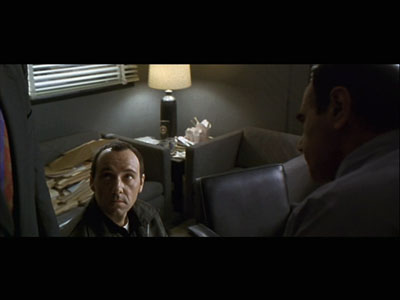 | 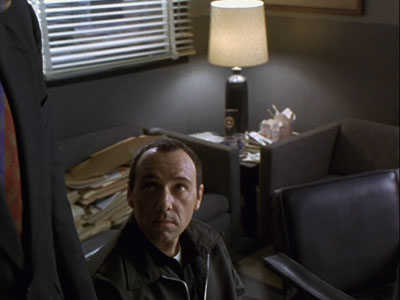
|
| A more rough sort of cropping, reminder of the traditional pan and scan process... |
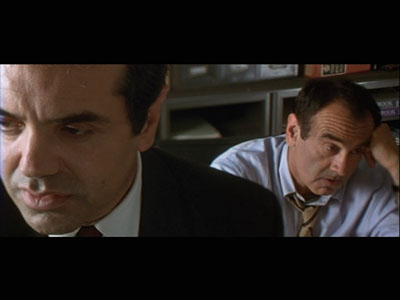 | 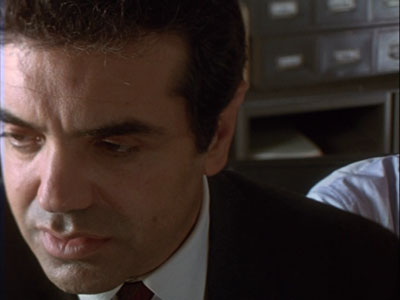
|
| It gets worse. |
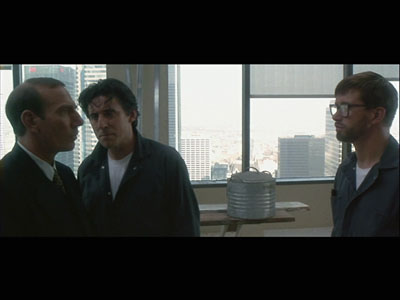 | 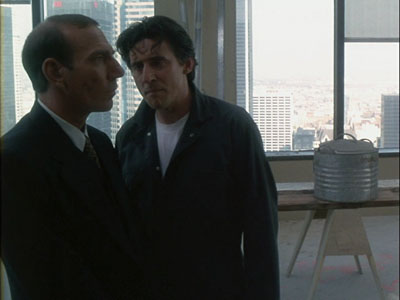
|
| Ay caramba! Surely the choice for Super35 didn't save this film from an atrocious formatting. The problem with this scenes might have been visible microphones above, preventing the use of the extra negative area. |
Face it, there's no "good" or "bad" formatting, like there's no good or bad censorship. You pay for an altered version and you are trusting someone, beyond the filmmaking process, with the task of adapting a film according to his or her view. I doubt there are many films where you'd get "extra image" on all shots.
«Drive» (Director's Cut) - edition Medusa Pictures, UK © 1995 Overseas Film Group.
«Hard Eight/Sydney» - edition Columbia Tristar, USA © 1996 Rysher Entertainment, Inc. and Green Parrot
«Ronin» - edition MGM, USA © 1997 United Artists Pictures Inc.
«The Usual Suspects» - edition MGM, USA © 1995 Polygram Film Productions, B.V.
4:3 shots from «Drive» where taken out from its making of and might not match exactly the official fullscreen release.
The last shot from «Sydney» was taken from its trailer.
All the other shots were taken from the fullscreen versions available on the DVDs listed above.
19/12/01







































